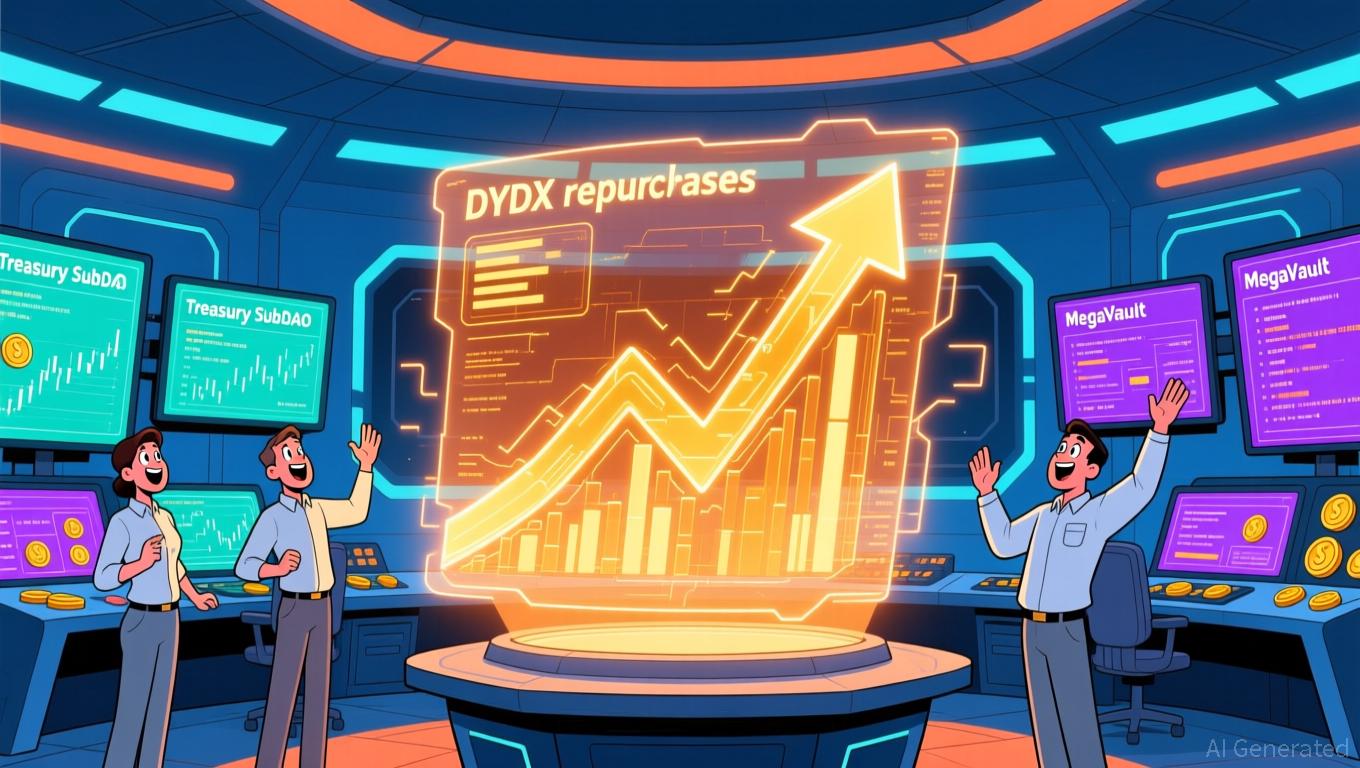HOT rises by 2.42% on November 12, 2025 following Pelephone’s updated offer for Hot Mobile
- HOT token rose 2.42% on Nov 12, 2025, amid Pelephone’s revised $565M bid for Hot Mobile, though it fell 72.66% annually. - Pelephone, a Bezeq subsidiary, raised its offer to NIS 2.1B (time-limited until Nov 16), competing with a $378M bid from Gil Sharon’s consortium. - Hot Mobile’s Q3 revenue reached NIS 517M with 2.66M subscribers, as Altice seeks to reduce debt through the sale. - Technical indicators show mixed trends, with short-term stabilization but long-term bearish pressure, as investors monitor
As of November 12, 2025, HOT was valued at $0.000635, marking a 2.42% rise compared to the previous day. Despite this short-term uptick, the token has suffered notable losses over longer periods—falling 13.74% in the past week and plummeting 72.66% over the last year. On a brighter note, HOT has managed a 2.92% recovery in the last month. These price shifts coincide with renewed attention on Hot Mobile, an Israeli telecom company, following an increased acquisition bid from Pelephone.
Pelephone, which operates under Bezeq Israel Communications Ltd, has raised its offer for Hot Mobile to NIS 2.1 billion (about $565 million), up from its earlier NIS 2 billion proposal. This latest bid, valid until November 16, intensifies the ongoing competition for Hot Mobile, currently owned by billionaire Patrick Drahi’s Altice International. With Altice aiming to reduce its debt, the likelihood of a sale has grown. Pelephone has clarified that the updated offer is non-binding and that discussions are still in flux. Meanwhile, a rival group led by billionaire Gil Sharon has put forward a NIS 1.4 billion bid, which is seen as having a smoother path to regulatory approval.
The increased bid from Pelephone has attracted international attention, given Hot Mobile’s significant presence in Israel’s telecom sector. The company reported third-quarter revenues of NIS 517 million, serving 2.66 million customers and achieving a record ARPU of NIS 48. Pelephone’s leadership has reiterated its focus on maintaining financial discipline and preserving its AA credit rating, factors that could bolster investor trust in the acquisition process.
Technical analysis points to a mixed scenario for HOT. While the token saw a modest gain over 24 hours, the weekly decline signals persistent bearish sentiment. The monthly rebound may hint at short-term stabilization, but the steep annual drop highlights ongoing long-term difficulties. Given the volatility, investors are closely watching both the outcome of the Hot Mobile acquisition and broader trends in Israel’s telecommunications industry.
HOT’s price movements seem to reflect the wider uncertainty in the market regarding corporate acquisitions and industry consolidation. Although the recent daily increase is encouraging, it does not yet indicate a lasting upward trend. The prolonged declines suggest that a more substantial catalyst—such as a completed acquisition or a significant market shift—may be needed to spark sustained bullish momentum.
Backtest Hypothesis
To better understand HOT’s recent price swings and the impact of the Pelephone bid, a backtesting approach could shed light on how similar events have historically influenced price trends. For example, one could examine instances where prices dropped by at least 10% over a rolling seven-day period and analyze subsequent performance. This strategy could help determine if HOT’s recent 13.74% weekly drop is consistent with patterns observed in comparable assets during similar circumstances.
By implementing this method with HOT or a similar token, investors can evaluate whether the current price pullback signals a buying opportunity or the continuation of a downward trend. The findings from such a backtest would provide a data-driven perspective on HOT’s medium-term prospects, especially in light of the Pelephone offer and broader market factors.
Disclaimer: The content of this article solely reflects the author's opinion and does not represent the platform in any capacity. This article is not intended to serve as a reference for making investment decisions.
You may also like
"Digital Privacy Advocate's Rights Reinstated, Underscoring Worldwide Disputes Over Technology Regulation"
- Telegram founder Pavel Durov regains full travel freedom after French judicial restrictions were lifted, following a year of compliance with supervision terms. - French prosecutors continue investigating Telegram for alleged complicity in criminal activity, including child abuse material, with potential 10-year prison charges. - Durov denies allegations, criticizes French procedures as "dystopian," and challenges legal classifications while seeking EU court rulings on digital governance issues. - The cas

dYdX Implements 75% Buyback: Synchronizing Holder Rewards with Platform Growth
- dYdX community approved 75% protocol fee allocation for token buybacks, up from 25%, via a 59.38% voter majority on November 13, 2025. - The revised distribution aims to reduce DYDX supply, enhance scarcity, and align token holder incentives with platform performance through automated, transparent buybacks. - 5% of fees now fund Treasury SubDAO and MegaVault for ecosystem development, balancing supply reduction with staking incentives and research-driven growth. - Analysts highlight this as a DeFi govern

XRP News Today: XRP ETF Debut Marks Transition Toward Utility-Focused Digital Assets as Regulators Approve a New Phase
- Canary Capital's XRPC ETF became the first U.S.-listed spot XRP ETF, trading $26M in 30 minutes on Nasdaq. - The launch followed SEC approval via Form 8-A and reflects growing institutional demand for RippleNet's cross-border payment utility. - XRPC outperformed Solana ETF's $56M first-day volume in pre-launch on-chain activity but faces whale profit-taking and mixed technical indicators. - Regulatory clarity post-July 2025 and XRPC's pure spot structure differentiate it from derivative-based XRPR ETFs,
ZK Nation Empowers Holders to Directly Manage Token Supply
- ZK Nation proposes ZKTokenV3 upgrade with permissionless burn functionality, a key step in programmable supply management. - New features include public token burning, BURNER_ROLE authority, and a 21 billion ZK supply cap enforced during minting. - Upgrade aims to decentralize supply control, enabling holders to directly impact scarcity without centralized governance. - Analysts highlight reduced inflation risks and increased market confidence, with voting active until November 13.